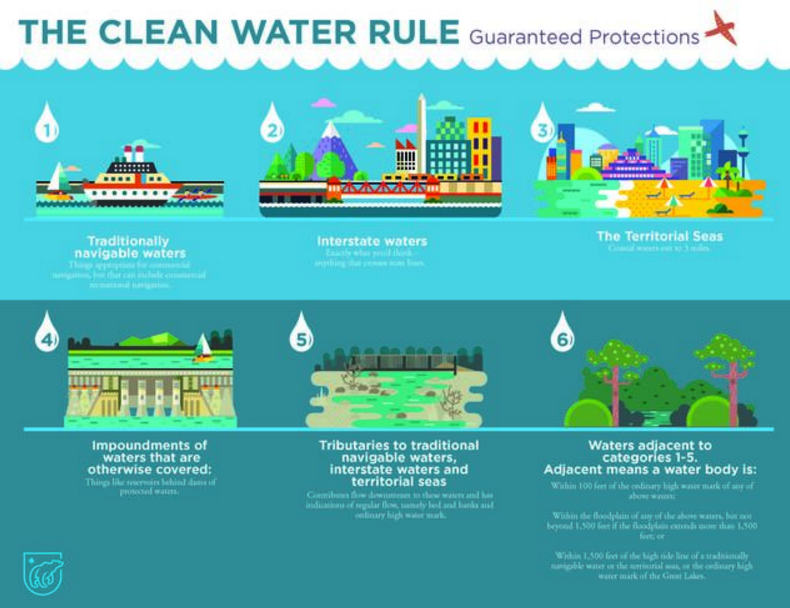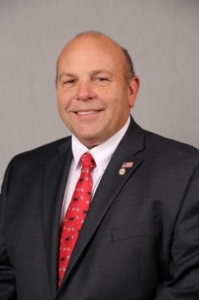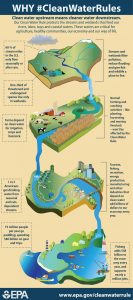
U.S. House of Representatives appropriators dealt a blow to clean water advocates and the Environmental Protection Agency when it released its 2018 budget last week.
While the bill provides full-funding of $300 million for the Great Lakes, it slashes the EPA’s budget by $528 million and provides resources to expedite the Trump administration’s desire to downsize the agency.
On the 2016 campaign trail Trump railed against the agency citing regulatory overreach that impeded economic growth. He promised to dramatically reduce EPA’s size and scope.
If approved, the House budget takes the first step to shrink the agency.
President Trump’s proposed budget would have eliminated all funding for Great Lakes restoration and cut the EPA’s budget by $1.9 billion.
End of the Clean Water Rule?
The House bill authorizes the EPA and Army Corps of Engineers to withdraw the Clean Water Rule – also known as Waters of the United States — promoted by the Obama Administration. The appropriators cited the administration’s “goal to rein in outdated, unnecessary and potentially harmful regulations at the EPA.”
The Clean Water Rule defines which waters come under the Clean Water Act, the landmark legislation that regulates discharges into waterways.
The rule is designed to prevent pollution and was meant to clarify conflicting court decisions about those waters.
The rule’s concept is what is discharged into a small stream eventually flows to larger bodies of water and ends up in drinking water sources like the Great Lakes. Therefore, it should be subject to regulation.
“Straightjacket on farming”
Nutrient runoff from farms to tributaries to the Maumee River in Ohio is the prime example for the Great Lakes region. That nutrient runoff fueled the toxic algae bloom in Lake Erie that caused the 2014 Toledo water crisis.
Agricultural interests say farmers are good stewards of the land and lobbied for a rollback of the Clean Water Rule.

Zippy Duval, President American Farm Bureau, courtesy of sdfbf.org
American Farm Bureau President Zippy Duval in a statement on the bureau’s website referred to the rule as a “federal land grab designed to put a straightjacket on farming and private businesses across this nation.”
Great Lakes policy expert Dave Dempsey recently noted that “agriculture is often untouchable when it comes to regulation” in a blog reference to Lake Erie’s algae problems from farm runoff.
The Clean Water Rule receives less attention from the Great Lakes congressional delegation than restoration funding because it’s politically more difficult to regulate polluters.
Every region of the country has environmental projects that benefit from federal funding but there are vast philosophical differences along party lines on the value of regulations.
Ignoring the science
The non-profit Great Lakes coalition Healing Our Waters praised the House appropriators for funding Great Lakes restoration but expressed a concern about the U.S. EPA budget cut.
“The budget sends mixed signals, as it continues to cut core programs as well as agencies like the Environmental Protection Agency charged with implementing Great Lakes restoration,” coalition director Todd Ambs said in a statement.
On the Clean Water Rule’s withdrawal Ambs told Great Lakes Now that “… it will only harm efforts to restore our Great Lakes.”
Ambs expressed concern that the administration can … “ignore the science behind the rule and avoid public comments about the repeal proposal.”
A Trump campaign surrogate speaking to the coalition last September made no specific promises concerning funding for the Great Lakes but said Trump was generally supportive of programs like the restoration initiative.
Wisconsin, Michigan and Ohio in the heart of the Great Lakes region all voted for Trump.
The 2018 budget process involves a number of steps and the House budget will have to be reconciled with the Senate’s before being forwarded to the president.
The 2017 budget expires on September 30th but it’s not unusual for congress to miss the deadline and for the existing budget to continue until a new budget is finalized.





